
views
Keeping Your Cat Healthy
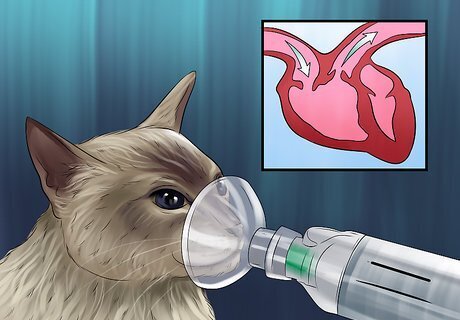
Go to the vet regularly. It is important to bring your Javanese cat to the vet for regular checkups (at least once a year), or in the event that you suspect it may be ill or injured. Your vet can advise you about your cat’s diet, exercise routine, and overall health, and test for diseases. As a breed, Javanese cats are genetically prone to conditions such as: Asthma Lymphoma Gastrointestinal conditions Congenital heart defects Progressive retinal atrophy

Feed your cat well. To keep your Javanese cat healthy, feed it good quality food and measure and control it's portions to prevent weight gain. Buy cat food with few to no preservatives or fillers (e.g. corn, soy) and a high percentage of protein. A healthy, active cat like the Javanese requires about 30 calories for each pound it weighs, each day. For instance, an 8 pound cat would require 240 calories per day. This works out to about one 6 oz. can of cat food per day, or 4/5 cup of dry food. Treats should make up no more than 10% of your cat's daily diet.
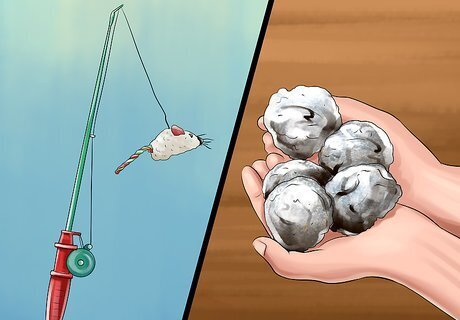
Exercise your cat. Javanese cats are very energetic cats who run the risk of feline obesity if they do not get enough exercise. Play games with your cat to keep it entertained and healthy. Purchase cat toys for your cat to bat around and chase on it's own (e.g puzzle toys or toy mice), or make cat toys yourself, such as: String toys Cat fishing rods Foil balls (with catnip, if desired) Feather toys Be sure to supervise your cat when at play to make sure it doesn’t ingest any foreign bodies.
Entertaining Your Cat
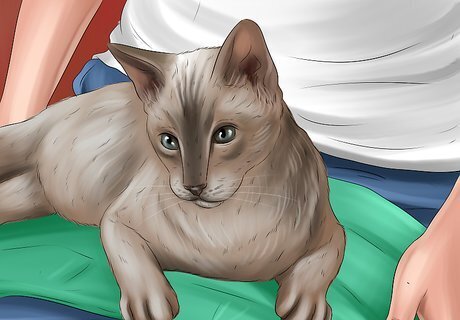
Devote time to it. Javanese cats are incredibly social and very inclined to be around people, often involving themselves in whatever you are doing. To care for a Javanese you must be willing to spend quality time with your cat when you are at home. Be prepared for a Javanese cat to shadow you, sit in your lap at any opportunity, sleep next to you at night, and copy your actions (opening cupboard doors, for example).

Train your cat. The Javanese is a highly intelligent and energetic breed that can be trained to fetch and walk on a leash. Attempt training just before mealtime, when your cat will be alert and eager. Use treats as a reward for when your cat retrieves a toy for you or allows you to attach it's harness without struggling. To get your cat to fetch, dangle the object in front of it (e.g. a toy mouse), toss it onto the ground in front of you, and call your cat back to you if it picks up the toy. The process will require patience, and trial and error. Once your cat brings the toy back to you (however long it takes), reward it with a treat and praise, and keep up the process to solidify the training. It’s also possible to train your cat with a clicker. The cat learns to associate a clicker with a treat, which you can use to reinforce desired behaviors.

Give it things to jump onto. Javanese cats are lean and athletic enough to jump onto tall furniture with great ease. To minimize your cat’s inclination to leap onto the refrigerator, tall dressers, or door tops, provide it with other options. Purchase a tall cat tree from a pet store or set up a high-up hangout on a counter top or sturdy dresser with a small cat bed, comfortable pillow, or soft blanket. To make these spots appealing to your cat, spray them with catnip spray.

Buy your cat puzzle toys. Javanese cats are highly energetic and curious, and can get into to trouble if they are bored or left without entertainment for too long. Purchase puzzle toys online or at your local pet store to keep your pet entertained when you are out or busy. Place treats inside the puzzle toys (which are usually made from either pet-safe cardboard or plastic), and leave them for your cat to play with and slowly extract their reward from. To keep your cat engaged and entertained, buy puzzle feeders in a variety of shapes and colors.
Grooming Your Cat
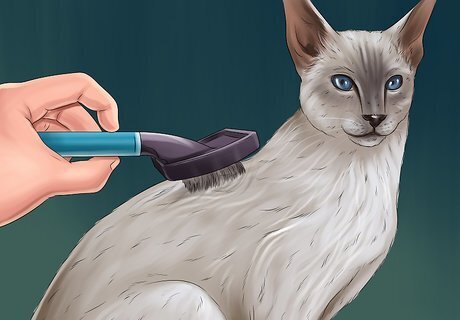
Comb your cat's hair. The Javanese's coat requires very little maintenance because it does not have an undercoat. Once or twice a week, use a stainless steel comb to remove any dead hair from your pet. Use treats and praise to make sure your cat is amenable during the process.
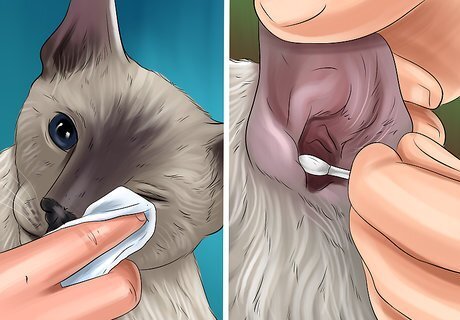
Check and clean it's eyes and ears. Check your cat's eyes and ears at least once a week. Use a soft, damp cloth to remove dirt or debris from eyes and ears, and check for signs of medical issues (e.g. dark discharge, redness). Pet and praise your cat during this process, which should be fairly easy given the Javanese's friendly temperament. If you see any signs of medical issues, consult your veterinarian.
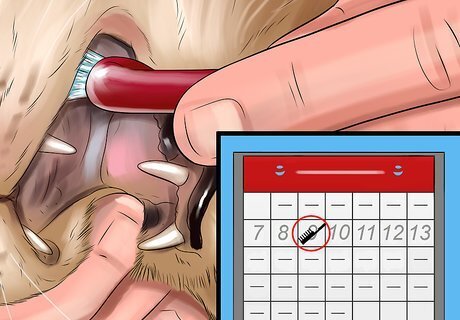
Brush your cat's teeth. Prevent periodontal disease in your Javanese by brushing its teeth once a week. Start introducing the cat to the toothpaste by placing it on a toothbrush and letting your cat taste it. Once your cat licks or chews on the toothbrush on it's own, you can attempt to brush it's teeth while bracing it's face gently but firmly. Purchase special toothpaste for your Javanese cat from a pet store. Never use human toothpaste, which may contain ingredients that are toxic to cats (e.g. Xylitol).

















Comments
0 comment